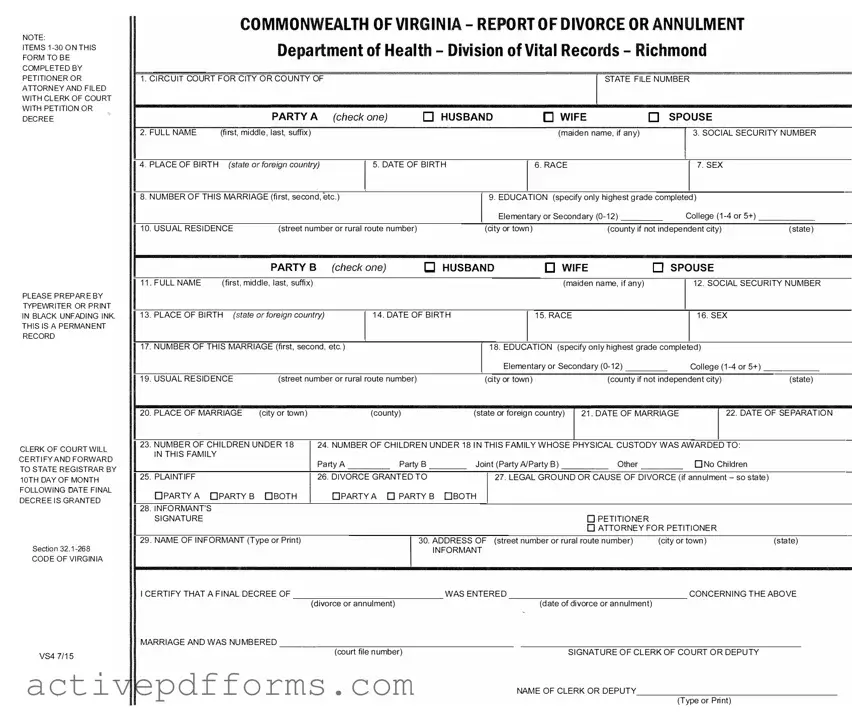Within the complexities of legal proceedings, especially those concerning personal matters such as divorce or annulment, meticulous record-keeping stands as a pillar of the process. The Commonwealth of Virginia, recognizing this necessity, has instituted a comprehensive form, the Vs 4, to consolidate and standardize the reporting of such significant life events. Tasked to be completed by the petitioner or their attorney, this document meticulously gathers data ranging from personal identifiers like social security numbers and birth details to more specific items like education levels, residence, and details concerning the marriage and its dissolution. By decree of the Code of Virginia, Section 32.1-268, this form, prepared with indelible black ink for permanency, must be submitted to the clerk of court accompanying the petition or final decree. Moreover, the obligation extends to the clerk, who must certify and forward these records to the State Registrar, ensuring a timely process by the 10th day of the month following the decree. This process underscores the gravity and permanency of the dissolution of marriage, emphasizing the procedural rigor with which the Commonwealth approaches these life-altering events.

